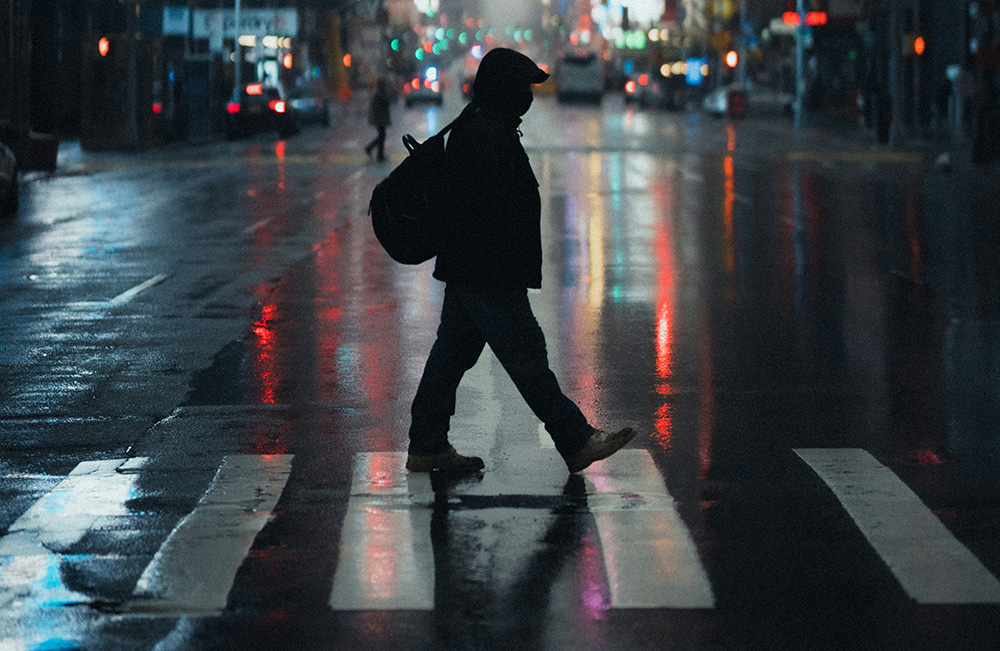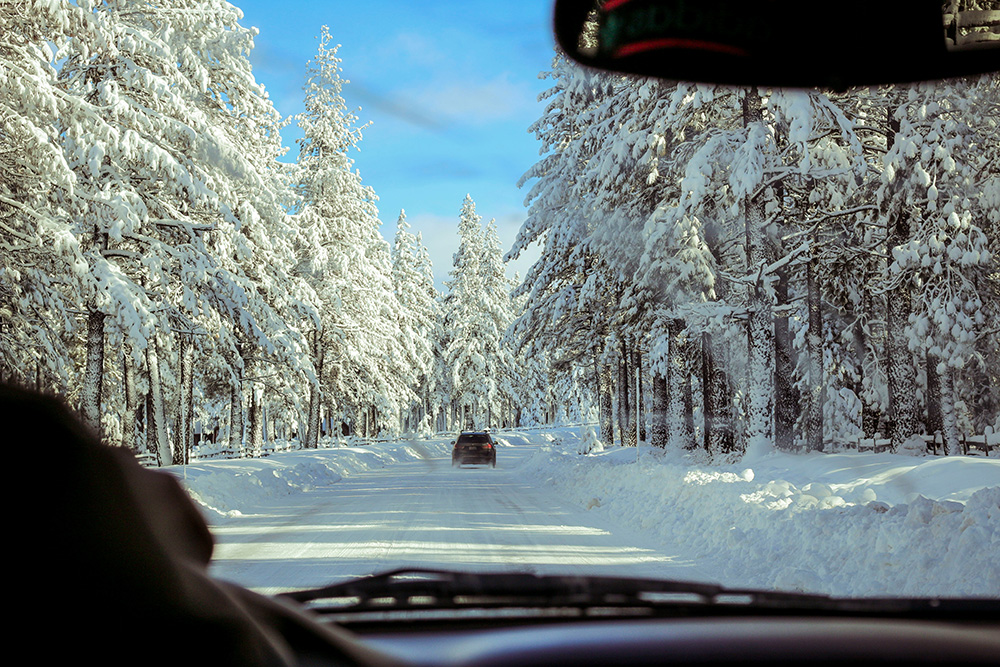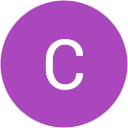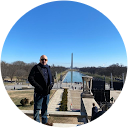
There has been an evident increase in accidents involving pedestrians in recent years, and these incidents often result in serious injuries. The Governors Highway Safety Association recently found that pedestrian fatalities reached a 41-year high of more than 7,500 in 2023, including 62 people killed in Connecticut. One has to think that the rise in distracted driving has played a major factor in this increase.
Pedestrians can receive compensation through insurance or workers’ compensation claims after an accident, but they are often insufficient to cover the full costs inflicted by an accident. Hiring a personal injury attorney can help you get fair compensation from both the insurance companies and those responsible for your injuries.
Causes of accidents involving pedestrians
Pedestrians can be injured in many unexpected ways, including slipping and falling on an unsafe sidewalk, falling materials at a construction site, or a collision with a bicyclist, scooter, or skateboarder. Pedestrians have even filed claims against other pedestrians who ran into them while distracted.
For this article, we’re focusing on motor vehicle accidents, which are the most common type of accident involving pedestrians and the most likely to cause serious injuries. Accidents can occur when:
- A vehicle hits a pedestrian crossing the street, either in a marked crosswalk or outside of one
- A vehicle goes around a turn and strikes a pedestrian
- One driver stops for a pedestrian, who is then struck by a driver going around them or passing in a separate lane
- A pedestrian walks in front of a vehicle as it is backing up
- A driver’s vision is blocked by hedges, walls, street signs or other obstructions
- A pedestrian is struck in a parking lot
- A driver does not see a pedestrian due to low visibility conditions, such as darkness or fog
- A driver loses control, leaves the roadway, and strikes a pedestrian
- Distracted driving
In some cases, a third party may share some of the blame or even be primarily responsible for the accident. This can occur when issues like poor road design, inadequate signage, or faulty vehicle parts contribute to an accident.
Finding evidence to support your claim
To prevail in a personal injury claim, a plaintiff has to put together strong evidence to uphold their version of events and show that a defendant’s actions were negligent. There are several pieces of evidence that can be used in a claim, including:
- A police report: Includes helpful information such as witness statements, measurements, photographs, dashcam video and a preliminary assessment of fault.
- Witness statements: Help corroborate your version of events. Ideally as close to the accident as possible, when they have a strong recollection of the accident.
- Medical records: Show the mechanism of injury in pedestrian cases through a diagnosis of your injuries, the treatments necessary for your recovery, and the costs you have paid for medical care.
- Photographs: Document the accident scene, including pictures of injuries, damage to the vehicle involved, and other relevant features such as road conditions and signs.
- Video footage: Captures footage of the accident or a driver’s actions before the accident, as well as at the scene after an accident. Video evidence can include surveillance footage from nearby homes and businesses as well as dashcam footage from law enforcement.
- Experts: Expert witnesses can include accident reconstruction specialists, investigators, civil engineers, code experts, and others. In addition, forensic accountants determine the impact of the accident on a plaintiff’s earning capacity.
- Driver record: Can strengthen claims of driver negligence by highlighting past traffic violations.
- Cell phone records: Can help prove that a driver was distracted at the time of the accident.
Negligence factors
Motorists have a duty of care to drive safely and follow traffic laws for their safety as well as the safety of anyone else using the road. If a driver behaves irresponsibly and this behavior causes them to hit a pedestrian, they can be found negligent and held liable for a pedestrian’s injuries. Examples of driver negligence include:
- Failing to yield: Drivers in Connecticut must yield to pedestrians in a crosswalk, and for safety reasons they must also give way to anyone crossing the street — even if not in a crosswalk. A recent Connecticut law also states that drivers must yield to pedestrians who make a visible signal that they are about to cross the street.
- Speeding: Drivers who are traveling at an unsafe speed are less capable of stopping or avoiding pedestrians properly using the roadway.
- Distracted driving: Drivers may not see a pedestrian in time if they are texting, talking on a phone, using an in-vehicle entertainment system, or otherwise distracted.
- Driving under the influence: If a driver is intoxicated, they will be less aware of their surroundings and have a slower reaction time.
- Disobeying traffic signals: Drivers may collide with a pedestrian if they go through a red light or stop sign
- Reckless driving: Any driver behavior that is aggressive or unsafe can cause them to collide with a pedestrian
Compensatory and punitive damages
Pedestrians who are injured by a negligent driver can seek compensatory damages. Depending on the circumstances of the accident, they may also be able to seek punitive damages.
Compensatory damages take into account both economic and non-economic losses resulting from the accident. Economic losses cover things like medical bills, lost wages, and personal property damaged or destroyed in the accident. The court may also determine that the plaintiff is entitled to additional damages for indirect, non-economic losses such as pain and suffering or the loss of enjoyment of life.
Punitive damages may be awarded in claims where the defendant’s behavior is reckless. These damages are meant to punish the defendant for their actions and deter similar behavior in the future.
In motor vehicle accidents where a pedestrian is injured, punitive damages may be awarded for particularly egregious conduct, such as when a driver intentionally hits a pedestrian, flees the scene after the accident, or hits a pedestrian while street racing, or drives distracted.
What if I was partially at fault?
Pedestrians also have a duty of care when using a sidewalk or roadway and are expected to act in a safe, predictable manner. In some circumstances, it may be determined that a pedestrian’s behavior contributed to the accident, including:
- Jaywalking, walking against a “Don’t Walk” signal, or failing to use a crosswalk
- Not following the rules of the road, including expectations that pedestrians will use a sidewalk when available, walk on the left side of the road, and yield to emergency vehicles with flashing lights or sirens.
- Acting in a way that a driver cannot anticipate, such as darting in front of a vehicle or entering the street from between two vehicles
- Walking while distracted, intoxicated, or under the influence of drugs
- Walking in a prohibited area, such as on the shoulder of a freeway
- Failing to take proper precautions when walking at night, such as wearing reflective clothing or carrying a flashlight.
Connecticut has a modified comparative negligence statute, which can hold a plaintiff partially responsible in an accident and reduce their compensation accordingly. However, it is still possible to recover damages as long as the court finds that you weren’t more than 50 percent responsible for the accident.
Let’s review your case
If you or a loved one were injured in a pedestrian accident, call Anderson Trial Lawyers at 860.886.8845. We’ll set up a free consultation to discuss your case and the intricacies of pursuing a claim when injured as a pedestrian.

The option to work from home, once a rarity, has become widely adopted in the aftermath of the COVID-19 pandemic. The arrangement often provides greater flexibility and convenience for workers, and many businesses accommodate their employees by allowing them to work remotely for at least part of the week.
The increased availability of remote work has also impacted personal injury claims. Remote work arrangements can lead to defense arguments for a reduction in settlements or verdicts on the basis that injured people can reduce their lost wage claim, a compensable damage, if they can work from home.
Even with the option to work from home, you’ll still want to recover an amount that adequately compensates you for your injuries. A skilled attorney will be able to craft a strong case on your behalf.
How lost wages and diminished earning capacity are calculated
When you are injured in an accident, you may be out of work for some time while recovering. Recovery in personal injury cases account for this by compensating someone for lost wages or the money you would have earned had you not been injured.
Lost wages are calculated based on your hourly wage (or annual salary) and the number of days of work you missed. This calculation can also take other factors into account, such as lost overtime, commissions, tips, bonuses, and retirement fund contributions; missed promotions; sick days or paid time off used during your recovery; and even certain work-related perks such as stipends. There are also challenges AND benefits to being self-employed and sustaining an injury through no fault of your own. As with any claim for lost wages, documentation is key.
Lost wages differ from diminished earning capacity, which awards damages based on the claim that your injury has limited your future ability to earn money. For example, accidents that result in the loss of a limb or a traumatic brain injury may make it impossible to return to the job you held before you were injured.
To calculate lost wages or diminished earning capacity, attorneys will collect information on your earnings, such as your W-2 form and pay stubs. Your employer can also provide testimony on your earnings and missed work, including details on any perks or additional income you lost after your injury. A self-employed person can often testify for themselves about earnings lost due to injury, without the need to bring in economists and vocational rehabilitation experts.
In addition, a seasoned personal injury trial attorney will collect medical evidence showing that your condition prevented you or currently prevents you from working. This evidence can include a note from your doctor explaining how much time is necessary for your treatment and recovery.
Diminished earning capacity can be determined with the help of forensic economists. These experts consider factors like age, education, work experience, and skills to determine how the injury has inhibited someone from advancing one’s career and how many more years they would have worked. They then determine a sum an injured person would have likely earned during a career had they not been injured.
Your duty to find work
An injured person does have the duty to mitigate his/her damages in a personal injury case, and this may come up in claims involving lost wages or diminished earning capacity. Plaintiffs must take reasonable steps to minimize the impact an injury has on their lives, and their ability to resume their regular activities, including work.
If a plaintiff is able to return to work after their injury, and fails to do so, a defendant may argue that a plaintiff acted unreasonably if they took actions such as failing to show up for a job interview, applying for unsuitable jobs, or refusing offers of employment at a salary less than what they were making before their injury.
A seasoned personal injury trial attorney will counsel someone injured on what should be done, depending on the circumstances, to make and prove a lost wage or diminished earning capacity claim.
The impact of remote work
When you’re injured in an accident but still have the ability to work remotely, you may be able to return to your previous role and minimize the time when out of work. An employer may also be able to adjust your work duties so you can work remotely, or you may be able to find other opportunities in your field that allow for remote work.
The possibility of remote work can lead a defendant to argue for a reduction in lost wages and to make the claim that you have not suffered diminished earning capacity. They may also argue that you failed to mitigate damages by not pursuing remote work or that your skills or abilities give you the opportunity to find remote work.
However, this type of debate was also common before the rise of remote work. Plaintiffs are often able to return to work in some capacity, but not at the level they were at before their injury. There are several circumstances where you can still argue that you have suffered lost wages and diminished earning capacity, even with remote work as an option. These include:
- Your earnings are reduced as a result of your work duties being adjusted to support remote work
- Your injuries prevent you from returning to full-time employment and only allow you to work remotely part-time
- Psychological or emotional trauma caused by your injury is inhibiting your ability to work
- Remote work is allowing you to earn income but limiting your potential for future career advancement
Getting injured while working remotely
Remote work has also raised questions about whether employees are eligible for workers’ compensation if they are injured while working from home.
Since workers’ compensation is no-fault insurance and an employer has no control over an employee’s home environment, it can be awarded for numerous different types of injuries that occur during the course of a workday. These can include injuries like carpal tunnel from frequent computer use or breaking an ankle while tripping over a loose rug.
It is generally accepted that employees can receive workers’ compensation for injuries that occur outside the workplace. However, they must demonstrate that they were doing a work- related activity. Even something like tripping and falling while walking from your home office to the kitchen to get a cup of coffee can be eligible for workers’ compensation; by contrast, your claim won’t be successful if you hurt yourself while mowing the lawn on your lunch break.
Workers’ compensation claims for injuries that occur while working from home can sometimes be more challenging than those that occur in the workplace. For example, an injury that occurs at home is less likely to be corroborated by witnesses. Insurers may also be suspicious of injuries that occur outside the typical 9-5 workday, even though employees may opt to put in evening hours when working remotely.
Let’s review your case
The attorneys at Anderson Trial Lawyers are here to assist you with your claim, including issues involving personal injuries and working remotely. Call 860.886.8845 or contact us online to set up a free consultation.

A visit to the playground offers children a chance for a fun day outside. Unfortunately, these visits sometimes end with a trip to the emergency room.
Studies have shown that more than 200,000 children in the United States go to the hospital each year with injuries sustained on the playground, such as concussions or severe lacerations. Broken bones resulting from a fall are the most common injury, and the majority of those injured are ages nine and under.
If your child was injured in a playground accident, you may be able to file a personal injury claim to receive compensation for their medical bills and other costs. These claims can be very complex, and a skilled attorney can provide helpful assistance. In this blog, we’ll explore some of the legal issues that may arise from a playground injury.
Premises liability
Playgrounds can be found at numerous different places, including schools, parks, day care centers, campgrounds, churches, and private homes. No matter who owns the playground, they have a responsibility to keep it safe. A claim against someone in control of a playground must demonstrate that the defendant failed to make sure the playground was reasonably safe to use. An injury may be caused, or worsened, by the following conditions on the premises:
Poor maintenance
The playground owner has a duty to regularly inspect it for any potential safety issues, such as broken equipment or unsafe surfaces. They also have a responsibility to repair these problems in a reasonable amount of time. If the property owner fails to take these steps, they can be held responsible.
Lack of hazard warnings
When a playground hazard is present, the playground owner must take steps to keep visitors away from it until it can be addressed. If they don’t take reasonable steps to warn others, such as putting up barriers or signs, they can be held liable for injuries resulting from the hazard.
Inadequate safety and security measures
The playground owner must take steps to ensure that the premises are safe and secure, especially if there are known issues at the site. Precautionary steps might include putting up fencing to prevent children from walking into a nearby street or installing lights if the playground can be used in the evening.
Products liability
You may also be able to file a claim against those responsible for designing, manufacturing, or constructing the playground. A products liability claim can be filed if one of the following scenarios occurred:
The playground is poorly designed or constructed
Playgrounds must be designed to endure various weather conditions and heavy use. They must also include adequate safety features and be appropriately designed for a specific age range. If there was a design flaw that made the playground inherently unsafe, it can contribute to injuries. If a defective product causes injury, a product seller may be responsible for damages.
Even if a playground is properly designed, errors or flaws in the production process can create unsafe conditions that contribute to injuries. If a manufacturer becomes aware of such a defect, they must issue a timely recall notice and provide proper notification to make the playground owner aware of any potential hazards. Manufacturers can also be held liable if they use substandard materials or other practices that compromise the safety of the playground.
Errors in the construction or installation of a playground can also contribute to injuries. These might include structural instability, loose components, and the exposure of sharp fasteners like screws and bolts.
Regulatory non-compliance
Playgrounds must comply with safety standards and regulations governing playgrounds. These standards can include federal, state, or local codes. Any parties that don’t abide by these standards can be held liable if this non-compliance is a substantial factor in causing an injury.
Failure to warn
Playground equipment usually includes labels warning visitors about certain inherent risks in using the playground. If the manufacturer fails to provide adequate information about potential safety risks, they can be held liable for an injury.
Negligent supervision
Parents have a duty of care to supervise their children at playgrounds, look out for potential hazards, and take reasonable steps to prevent injuries. This duty also extends to adults who supervise children “in loco parentis,” or in place of the parents, such as teachers and day care staff.
The playground owner can be held liable if a staffer did not properly supervise children using the playground. Negligent supervision may include not addressing a safety hazard, failing to stop dangerous behavior, or being absent or distracted when the injury occurs. It can also include the failure of the playground owner to hire qualified staff, maintain adequate staffing levels, provide proper training, or establish proper policies and procedures.
Negligent supervision can sometimes be challenging to prove, as the plaintiff must show that the defendant failed to act reasonably and did not provide an adequate standard of care. This factor can also be less applicable in claims involving older children, who are generally expected to exercise better judgment and not require close supervision.
Other considerations
Depending on the circumstances of the accident, several other issues can come into play when a child is injured on a playground. These might include:
Governmental immunity
Publicly owned playgrounds, including those at schools or parks, have greater protection from legal claims due to government immunity. This protection aims to prevent legal actions against government entities. However, there are certain exceptions to this immunity, which must be investigated to defeat a governmental immunity defense.
Trespassing
There may be clear signs indicating that a playground is not used at certain times, such as after sunset or outside of school hours. If an injury occurred outside of these hours, the defendant may argue that the plaintiff was trespassing and therefore not owed the same duty of care owed to users during normal hours. However, property owners are still responsible for keeping the property in good repair and owe a greater duty of care to children (see below).
Attractive nuisance precautions
Property owners must take precautions to prevent foreseeable harm children may suffer due to property features that may attract children. For example, the owner of a private playground has a duty of care to put up fencing or other deterrents to prevent its unsupervised use.
Shared fault
A defendant may argue that you share some of the fault for your child’s injury. For example, if a child is injured due to unsafe equipment but you were not supervising them at the time they were hurt, the defendant can argue that you were partially to blame. This can result in a reduction in the award received in a settlement or verdict.
Let’s review your case
Personal injury claims involving playground injuries can be complex. If your child has been injured in a playground accident, the attorneys at Anderson Trial Lawyers will sit down with you to discuss the circumstances of the accident and how you might proceed with a claim, and conduct the needed investigation to pursue a claim. Contact us online or call 860.886.8845 to set up a free consultation.

Winter weather conditions can sometimes make for a scary driving experience. Snow, ice, or slush might create slippery road surfaces, which can cause a driver to lose control of their vehicle and crash.
Icy roads can also complicate motor vehicle accident claims. If a driver collides with your vehicle on a slick road, they may argue that they are not liable for your injuries because the dangerous road conditions made the crash impossible to avoid. The condition of the road can also be a factor in determining whether a driver was at fault in an accident, and hence, whether insurance will pay for all damages caused in a crash.
The attorneys at Anderson Trial Lawyers are skilled in handling motor vehicle accident claims of all kinds, including motor vehicle accidents that occur in winter weather. Here are a few factors that commonly come up in these types of claims.
Negligent driver behavior
When you get behind the wheel, you owe a duty of care to drive responsibly — not only for your own safety but for the safety of everyone else on the road. When hazardous conditions are present, this means you must reduce your speed and otherwise use extra caution to reduce the chances of an accident.
For this reason, motor vehicle accident claims primarily focus on the behavior of each driver rather than the road conditions at the time of a crash. Drivers are expected to be aware of any hazards the weather might create — many vehicles even issue a warning that ice might be present when they are started on days with freezing temperatures — and respond accordingly.
If you are involved in an accident with another driver who was not exercising due caution at the time of the crash, they can be held liable for your injuries. Some examples of negligent behavior include:
- Driving too fast for conditions: During hazardous conditions, drivers are expected to slow down to travel at a safe speed — even if their vehicle is equipped with four-wheel drive, snow tires, or other features to help them navigate winter weather. Drivers who travel too fast for conditions may not be able to safely stop on a slippery road.
- Following too closely: Drivers must always maintain a safe following distance from the vehicle in front of them so they can stop, if necessary. During slippery conditions, drivers are expected to increase this following distance to account for reduced traction.
- Inadequate maintenance: A driver’s duty of care includes keeping their vehicle in safe working condition. Certain maintenance issues, such as tires and brakes, will make it more difficult for a driver to operate their vehicle and avoid a crash in icy conditions.
- Failing to take other precautions: A driver might be held liable if they do not take other proper precautions in poor weather conditions, such as using their headlights during low visibility conditions and clearing their windshield of snow and ice.
Factors that limit a driver’s liability
In some cases, a court may decide that a crash resulted from the inherent risks of driving in hazardous weather during the winter, not negligence on a driver’s part. Even if a driver is found to be negligent in a crash, certain factors can limit their liability. These include:
- Unpredictable hazards: If a driver encounters something unusual on a road with little or no warning, they may be able to argue that they did not have adequate time to respond to the hazard.
- Reasonable driving behaviors: A driver may be able to show that the accident occurred even though they were taking the necessary precautions, such as reducing their speed.
- Uncontrollable sliding: Some circumstances, such as a severe ice buildup and sloped roads, can cause vehicles to slide uncontrollably. This can be considered a mitigating factor that reduces a driver’s liability in a crash.
Third-party liability
On public roadways, it is the duty of the state or municipal government to keep the road reasonably clear of snow and ice in order to permit safe travel. They are also responsible for the upkeep of features that can improve road safety and reduce accident severity, such as streetlights and barriers that separate the road from a steep slope.
Governments typically have immunity protections against certain lawsuits, on the principle that excessive litigation could impede the government’s ability to provide services. However, municipal or state governments can still be held liable if they fail to properly maintain a road.
For example, you might show that a town’s public works department failed to sand and salt the road despite adequate warning of potential icing, or that they did not respond to icy conditions in a timely manner. You can also argue that inadequate maintenance of safety features contributed to a more severe accident.
If the crash occurred on a private road, you may be able to file a claim against the entity responsible for maintaining the road. Certain other factors will also affect liability for motor vehicle accidents on private roads, such as contractual agreements between a homeowners association and the party responsible for the upkeep of the road.
Let’s review your case
If you or a loved one have been injured in a motor vehicle accident, the skilled attorneys at Anderson Trial Lawyers can help. We’ll review the circumstances of your accident and help you get the settlement or verdict you deserve. Contact us online or call us at 860.886.8845 to set up a free consultation.

Most of us have had the unpleasant experience of taking a tumble during the winter. Snow and ice create more slippery surfaces, making it more likely that you’ll lose your footing.
Slipping and falling is so common in wintertime that people may consider it a normal part of the season. Yet these incidents can also lead to serious injuries, such as broken bones or traumatic brain injuries, that result in lost wages and expensive medical bills.
Even though falls occur frequently in the winter, you’ll still have grounds for a personal injury claim if another person’s negligence contributed to your accident. However, numerous factors also go into determining liability in a winter slip and fall case, including the property owner’s responsibilities, the injured person’s actions, and the inherent risks of winter weather.
When you have grounds for a personal injury claim
The property owner failed to remove ice and snow
Property owners have a duty of care to keep the premises reasonably safe for visitors. During the winter, that means inspecting areas such as walkways, driveways, and parking lots for snow and ice, and then taking steps to remove it. Although public sidewalks are considered municipal property, local ordinances and statutes typically put the responsibility for snow and ice removal on the abutting property owner. Commercial property owners also have a duty to anticipate inclement weather and prepare accordingly, in addition to maintaining the property after a weather event.
The property owner negligently maintained their property
If a property owner does not maintain their property well, it can lead to hazards such as leaking roofs, improperly draining gutters, or poor drainage. These conditions can cause water to pool and freeze in areas where visitors might walk, increasing the risk of a slip and fall accident. Property owners can also directly create hazards through negligent behavior, such as emptying water onto a nearby sidewalk and allowing it to freeze.
The property owner failed to warn you about the hazard
A property owner can — and should — put up signs or barriers warning people about slippery conditions they know to exist. If the property owner does not take this step, they can be held liable if someone is injured on the property.
When you might not have a claim
The property owner wasn’t negligent
Property owners are not expected to remove every last speck of snow and ice from their property, only to make a reasonable effort to address the hazard. A court may determine that the property owner did their due diligence but that inherently dangerous conditions still remained.
Similarly, property owners are not expected to clear snow and ice as soon as it appears; rather they must address the hazard within a reasonable amount of time. If you slipped and fell while walking during a winter storm, for example, a property owner can’t be held liable because they aren’t expected to clear their property until after this weather has subsided (this is known as the “ongoing storm doctrine”).
Property owners can also sometimes limit, or even eliminate, their liability if they demonstrate that they quickly addressed a hazard once it was reported to them.
You share the blame for your injury
Comparative negligence is an affirmative defense that typically acknowledges that the defendant bears some responsibility for the plaintiff’s injuries, but also argues that the plaintiff is partially to blame due to their own negligent actions. For example, the defendant in a winter slip and fall case might argue that the plaintiff was wearing improper footwear or failed to see the hazard because they were distracted at the time.
If the court determines that you were primarily responsible for your injury (at least 51 percent to blame), you won’t be able to recover damages. If the defendant was primarily to blame, you’ll still be able to file a claim but comparative negligence will reduce the damages you’ll be able to recover.
You slipped and fell on public property
Government entities generally have greater protection against lawsuits. This will limit your ability to file a claim if you slipped and fell at a location such as a government building, public park, or a sidewalk maintained by a municipality.
However, it is still possible to file a claim against a government entity if you follow certain procedures and abide by timelines, and if you can make the case that the government was negligent in its duty of care.
Let’s review your case
If you have been injured in a winter slip and fall accident, the experienced attorneys at Anderson Trial Lawyers can help you with your personal injury claim. Contact us online or call us at 860.886.8845.

You may be reluctant to bring a personal injury claim, but not because you’re worried that you won’t prevail at trial or get treated fairly under the law. Instead, you may be worried that people will think your claim is frivolous.
“Frivolous lawsuit” is a term created by politicians and insurance companies to call into question the entire concept of seeking fair and reasonable compensation for real injuries caused by the negligence of another. There have been many personal injury claims filed over unusual incidents. This doesn’t mean those claims are frivolous. With more people on this planet, more cars on the road, and more products being advertised to us in a commercial world, honest people are being harmed and deserve to have their claims determined on the merits of their case.
Even if a personal injury claim seems strange, that doesn’t necessarily mean that it is without merit. Perhaps the most famous example is the McDonald’s hot coffee case of 1994, in which an elderly woman named Stella Liebeck sued the fast food chain after spilling coffee on herself. Many people still believe that this case involved a greedy plaintiff who suffered a minor burn from carelessly handling a hot beverage, then exploited the injury to seek a huge settlement from a wealthy corporation.
The truth is much more complicated. Liebeck suffered third-degree burns over 16 percent of her body and was hospitalized for eight days. She only sued McDonald’s after the company repeatedly refused her requests to cover her medical bills. The trial also exposed how McDonald’s had been keeping its coffee dangerously hot (against industry safety standards) to maximize the number of cups of coffee it could get out of one pot, and hadn’t changed this practice even after the company became aware of hundreds of prior burn injuries. In other words, the trial brought out the greed of a fast food giant in the face of many people being injured by their product.
In the end, Liebeck asked the jury to send a message to McDonald’s. Liebeck prevailed in her claim, and McDonald’s was ordered to pay compensatory damages for her pain, suffering, and medical bills, as well as punitive damages.
The award was equal to one day’s coffee receipts for McDonald’s worldwide, which is why the number was so high. And this is what the insurance industry, politicians in the pockets of big business, and others that want to limit injured people’s rights access to the courts used to indoctrinate the general public — those that will eventually sit on juries. In actuality, the trial court reduced Liebeck’s award substantially under state law. The general public rarely heard about that, however.
Even if you’re worried that your personal injury claim may cause you embarrassment, this shouldn’t dissuade you from consulting with an attorney on the matter. If you have a legitimate personal injury claim and choose not to pursue it, you won’t be able to collect any damages from the negligent party — and you may be on the hook for any medical bills and other expenses.
Frivolous personal injury claims vs. illegitimate personal injury claims
Very few personal injury claims are actually considered frivolous. That’s because a frivolous claim is one the court determines to be a deliberate bad faith effort to harass a defendant. Frivolous lawsuits may attempt to tarnish a defendant’s reputation, cause embarrassment to a defendant, or bring media attention to an issue.
Courts consider personal injury claims to be frivolous if they are filed on grounds that are so flimsy that a reasonable person wouldn’t believe that the facts support the plaintiff’s case. A court may also consider a claim to be frivolous if it is not supported by existing laws, although the plaintiff may argue that they believe there is a good faith argument for their case to establish a new legal precedent.
In general, attorneys will never try to take a frivolous claim before a court. Here’s why:
- Bad reputation: Frivolous lawsuits cause stress and economic losses for the defendants and waste the court’s time. Attorneys don’t want to be responsible for this type of detrimental impact, or receive a poor reputation due to such claims.
- Wasted effort: Summary judgment decisions quickly dismiss frivolous claims so they stop taking up the court’s time. Attorneys are unlikely to spend time and effort preparing a claim if it’s destined to be quickly thrown out.
- Penalties: Attorneys filing frivolous cases can be fined, sued or even disbarred.
Many of the lawsuits that are held up as examples of frivolous claims are actually legitimate claims. They are advertised as frivolous even though a jury of honest people found the claim legitimate.
Is my claim legitimate?
A personal injury claim is legitimate if you have suffered an injury and can show, by a preponderance of the evidence, that this is due to a violation of law, policy or code, or the action—or lack of action—by the defendant. The strongest claims will clearly demonstrate that the defendant violated a long-standing rule and how the plaintiff has been affected (such as financial losses or the inability to continue enjoying certain activities).
In some cases, the evidence is clearly on the plaintiff’s side and a settlement can be reached quickly. However, most claims involve more complicated circumstances. The defendant may argue that they were not responsible for the plaintiff’s injuries, or that the plaintiff was partially if not completely responsible for their own injuries.
A defendant may also try to frame a plaintiff’s case as frivolous, and just this accusation can bias a jury against the plaintiff. A skilled attorney can push back against this argument and show how your personal injury claim has merit.
If you have any concerns over the legitimacy of your personal injury claim, consultation with an experienced attorney is a good place to start. This meeting is a chance to discuss your claim, what evidence you have to support it, and whether it is likely to succeed in court. To schedule a free consultation with Anderson Trial Lawyers, call 860-886-8845 or contact us online.

Some people consider motorcyclists to be reckless, irresponsible, and dangerous. This bias can affect the people who witness the accident, the first responders who treat the injured motorists, the judge and jury hearing a claim, and the insurance adjusters determining the value of a claim.
It’s important to understand these biases when filing a claim in a motorcycle accident. An experienced personal injury lawyer will work to push back against “motorcycle bias” and get you the settlement or verdict you deserve.
Examples of motorcycle bias
People can be biased against motorcyclists because they believe:
- Motorcycles are too difficult to see on the road
- Motorcycles are too fast or loud
- Motorcyclists are risk-takers
- Motorcycling is a risky behavior and motorcyclists knowingly assume the risks of the road
- Motorcyclists are irresponsible young men prone to dangerous behavior
Any of these biases can make a person more likely to believe that a motorcyclist is at fault in an accident.
Insurance company biases against motorcyclists
above but also because statistics seem to indicate that motorcyclists are more dangerous motorists. For example, motorcyclists are associated with a higher rate of fatal motor vehicle accidents. While this is a result of their more limited protections and smaller size, insurers may believe that it’s due to reckless riding.
Insurers may also believe that motorcyclists’ injuries are a result of poor decisions, such as choosing not to wear a helmet. Connecticut does not require a motorcyclist to wear a helmet. In fact, about two-thirds of motorcyclists wear a helmet and injuries are more common because motorcyclists are more exposed in collisions with motor vehicles.
Bias from insurance companies can lead to a denial of claims or a reduction in value. This, in turn, can leave a motorcyclist struggling to pay their medical bills and other expenses after an accident, and little to nothing for the way their injuries affect their day to day life.
When filing a motorcycle accident claim, we make the argument that the greater risks associated with motorcycles don’t mean that motorcyclists are inherently riskier drivers. A person riding a motorcycle responsibly still presents far less risk to themselves and others on the road than a person driving a motor vehicle irresponsibly.
Overcoming motorcycle bias
When filing a claim related to a motorcycle accident, the attorneys at Anderson Trial Lawyers work to address and overcome any potential biases that may affect the case. This strategy helps ensure that the claim gets fair consideration.
The use of accident reconstruction experts can build a convincing set of arguments supported by evidence, such as photographs, diagrams, videos, skid mark measurements, and analyses of vehicle damage to combat assumptions that the motorcyclist was driving recklessly.
We also confront these biases during jury selection to minimize the effects of bias when the claim is settled or goes to trial. By making jurors aware of motorcycle bias, we help ensure that they aren’t unconsciously affected by it.
Witness testimony is particularly valuable. Statements from friends and family can separate you from negative stereotypes and emphasize that you are a safe, law-abiding motorcyclist.
Injured in a motorcycle accident?
If you or a loved one have been injured in a motorcycle accident, contact the attorneys at Anderson Trial Lawyers for a free consultation.
Call us at 860-886-8845 or contact us online.







